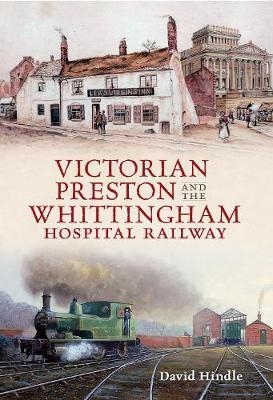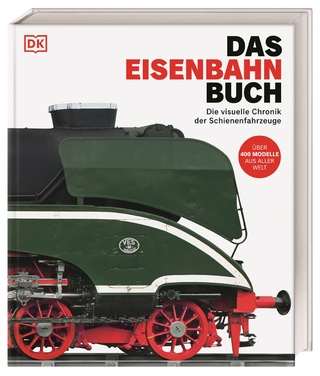
Victorian Preston & the Whittingham Hospital Railway
Seiten
2012
|
U ed.
Amberley Publishing (Verlag)
978-1-4456-1009-2 (ISBN)
Amberley Publishing (Verlag)
978-1-4456-1009-2 (ISBN)
The book incorporates a brief social history of Preston and Whittingham Hospital as a lead into the establishment of the Whittingham Hospital Railway.
In commemoration of Preston Guild 2012, David Hindle takes a journey into history to explore the social, cultural and economic background to Preston during the Industrial Revolution, primarily to see if life in Preston then lived up to the affectionate claim to be the 'good old days' and at the same time takes a nostalgic look at the foundations of the music hall industry. Charles Dickens visited Preston at the beginning of the infamous cotton famine in 1861. As usual Dickens's literary eye was focused on 'the underdog' and the 'hard times' that they had to endure during the so-called good old days. David Hindle's extensive research suggests that the level of squalor, prostitution, pauperism and unwanted pregnancies contributed to poor health and the need for the penniless and mentally ill to be fully institutionalised in the established workhouse or the new asylums such as Whittingham, which was served by its own private railway. The Whittingham Hospital Railway (WHR), known colloquially as the nurses' special, was primarily intended for hospital staff working shifts and residing in Preston and the surrounding villages of Grimsargh, Longridge, Chipping and Ribchester. The railway was constructed between 1887 and 1889 as a mineral line to convey coal and provisions to the new Whittingham Hospital, linking the hospital with the joint London & North Western and Lancashire & Yorkshire's Preston to Longridge branch line at Grimsargh. Passengers soon followed and private stations were built at either end of the almost two-mile long (8,560 feet), standard gauge line at Whittingham and Grimsargh. This book is an altogether fascinating insight into the social history of Preston linked with a Victorian anachronism, 'The Whittingham Hospital Railway.'
In commemoration of Preston Guild 2012, David Hindle takes a journey into history to explore the social, cultural and economic background to Preston during the Industrial Revolution, primarily to see if life in Preston then lived up to the affectionate claim to be the 'good old days' and at the same time takes a nostalgic look at the foundations of the music hall industry. Charles Dickens visited Preston at the beginning of the infamous cotton famine in 1861. As usual Dickens's literary eye was focused on 'the underdog' and the 'hard times' that they had to endure during the so-called good old days. David Hindle's extensive research suggests that the level of squalor, prostitution, pauperism and unwanted pregnancies contributed to poor health and the need for the penniless and mentally ill to be fully institutionalised in the established workhouse or the new asylums such as Whittingham, which was served by its own private railway. The Whittingham Hospital Railway (WHR), known colloquially as the nurses' special, was primarily intended for hospital staff working shifts and residing in Preston and the surrounding villages of Grimsargh, Longridge, Chipping and Ribchester. The railway was constructed between 1887 and 1889 as a mineral line to convey coal and provisions to the new Whittingham Hospital, linking the hospital with the joint London & North Western and Lancashire & Yorkshire's Preston to Longridge branch line at Grimsargh. Passengers soon followed and private stations were built at either end of the almost two-mile long (8,560 feet), standard gauge line at Whittingham and Grimsargh. This book is an altogether fascinating insight into the social history of Preston linked with a Victorian anachronism, 'The Whittingham Hospital Railway.'
David John Hindle MA completed over 30 years police service in the Lancashire Constabulary. He is now a theatre and social historian, naturalist and conservationist, who regularly broadcasts on B.B.C. Radio Lancashire. He is the author of ten books covering history and natural history. He is the President of the Preston Historical Society and serves on several history forums promoting and researching important aspects of local history. David lives in Preston.
| Erscheint lt. Verlag | 15.9.2012 |
|---|---|
| Zusatzinfo | 145 Illustrations |
| Verlagsort | Chalford |
| Sprache | englisch |
| Maße | 172 x 248 mm |
| Gewicht | 340 g |
| Themenwelt | Natur / Technik ► Fahrzeuge / Flugzeuge / Schiffe ► Schienenfahrzeuge |
| ISBN-10 | 1-4456-1009-4 / 1445610094 |
| ISBN-13 | 978-1-4456-1009-2 / 9781445610092 |
| Zustand | Neuware |
| Informationen gemäß Produktsicherheitsverordnung (GPSR) | |
| Haben Sie eine Frage zum Produkt? |
Mehr entdecken
aus dem Bereich
aus dem Bereich
Das Beste aus Stadt und Land.
Buch | Softcover (2024)
VUD Medien (Verlag)
12,00 €
The Definitive Guide
Buch | Softcover (2024)
hidden europe publications (Verlag)
26,15 €
die visuelle Chronik der Schienenfahrzeuge
Buch | Hardcover (2024)
DK Verlag Dorling Kindersley
34,95 €


